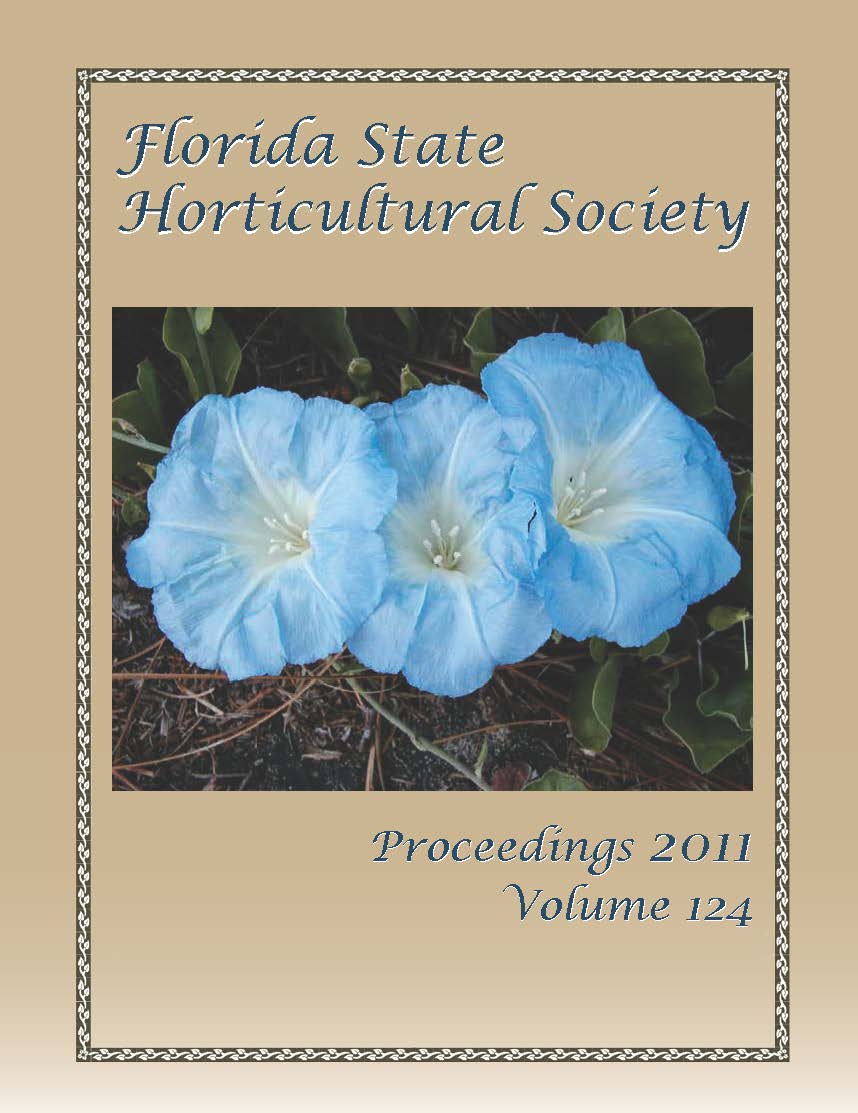Published 2011-12-01
Keywords
- cold-injury,
- flowering,
- freeze-injury,
- maturity,
- paclobutrazol
- scoring,
- training ...More
Abstract
Citrus seedling juvenility delays new hybrid evaluation, slows cultivar release, and slows introgression of new traits. A horticultural program reported to overcome citrus juvenility was tested at the Florida Citrus Research Foundation Whitmore Farm (Lake County), using replicated Hirado Buntan ×Clementine seedlings and standard cultivars all propagated onto US-812 rootstock. Due to cold-winters, influence of treatments on cold-injury was evaluated and damage was too great to assess juvenility reduction uncompromised by this injury. Treatments compared on each genotype were: 1) non-trained control, 2) training to a single upright shoot (TSUS), 3) TSUS with trunk-scoring in December, 4) TSUS with soil paclobutrazol in December, 5) TSUS with weekly thorn removal, and 6) TSUS with weekly thorn removal and scoring in December (complete juvenility reduction program). Trunk diameter increased faster on nontrained vs. TSUS trees. In Jan 2010, there were 23 hours < –4.4 °C and 1 hour < –6.7 °C. Trees were assessed for cold damage: 26% of non-trained trees vs. 100% of TSUS trees displayed damage ranging from nearly complete defoliation to death. In control trees 11% were killed. TSUS trees of treatments 2, 4, and 5 had mortality of 9% to 17%, while trunk-scored trees (treatments 3 and 6) had higher mortality at 23% to 34%. Even though a cold protection tarp system was installed and used on surviving trees during the period of coldest weather in early December, further damage occurred following freezing conditions in Dec. 2010 with 17 hours < –4.4 °C and 1 hour < –6.7 °C. TSUS trees again showed much more damage than non-trained trees with a cumulative 66% to 83% mortality vs. only 17% for nontrained controls. These techniques increase risk of serious winter-injury, and require more elaborate cold protection to be implemented in colder areas such as Lake County.

